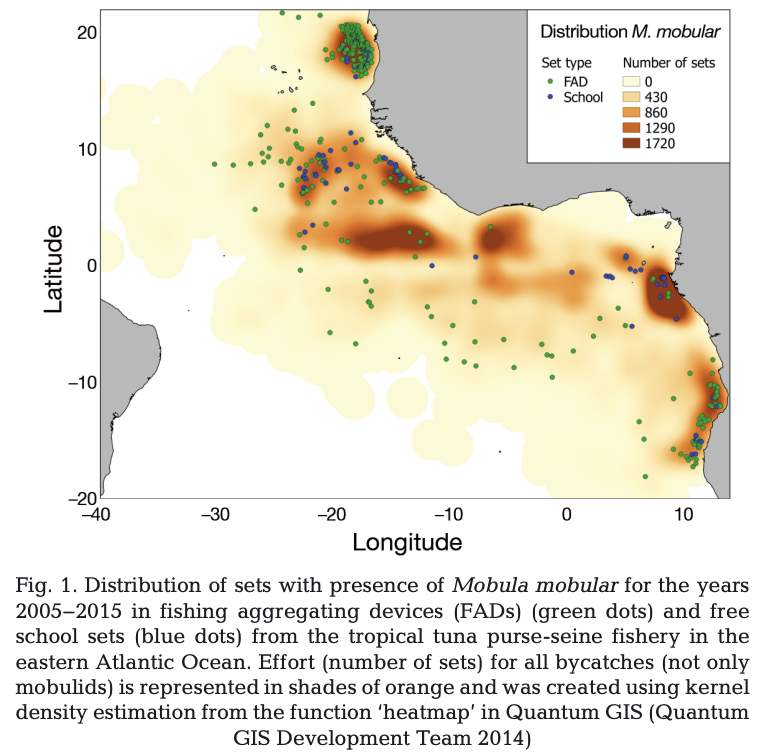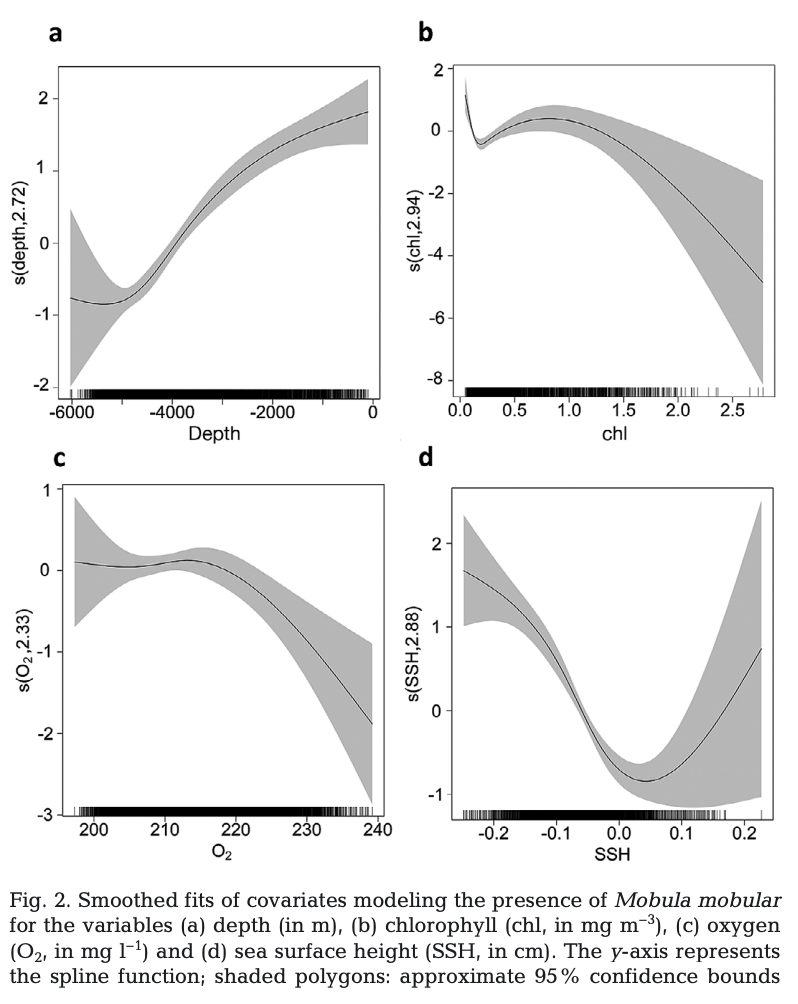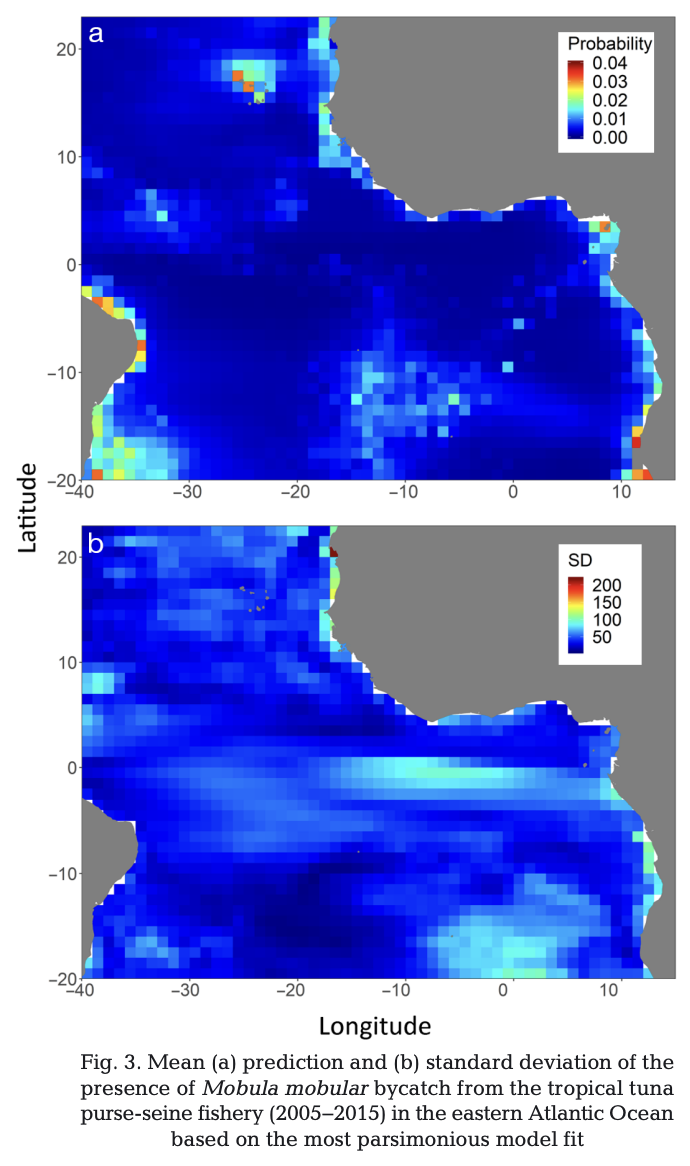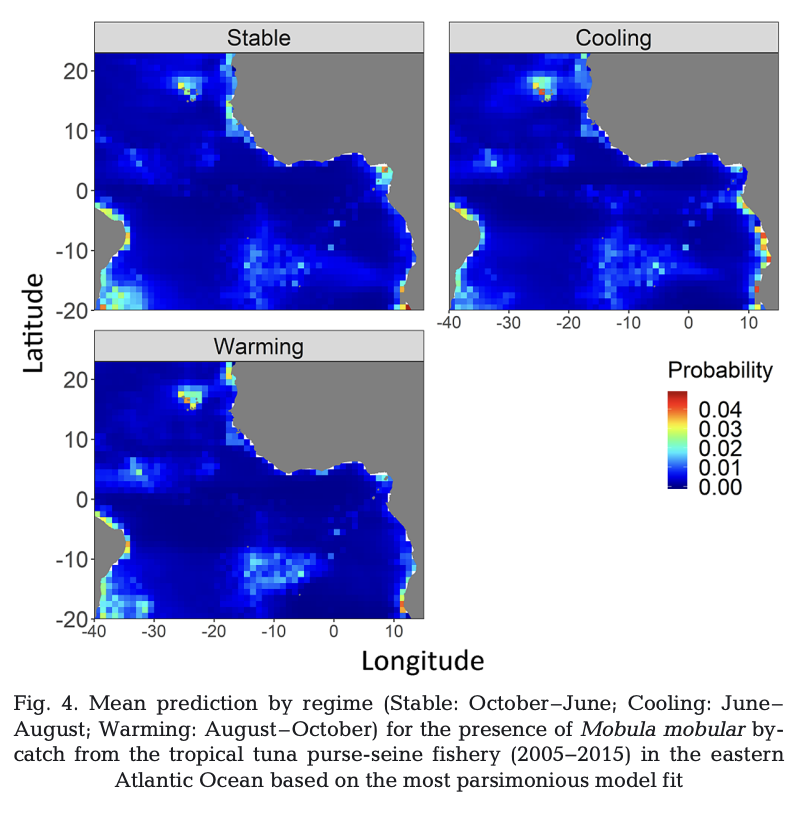Spatio-temporal distribution of the spinetail devil ray Mobula mobular in the eastern tropical Atlantic Ocean
December 2020
Nerea Lezama-Ochoa, Jon Lopez, Martin Hall, Pascal Bach, Francisco Abascal & Hilario Murua
Keywords: Spinetail Devil Ray • Species Distribution Modeling • Bycatch Species • Tropical Tuna • Eastern Atlantic Ocean • Conservation




Summary: The distribution of the spinetail devil ray (Mobula mobular) in the eastern tropical Atlantic is not well understood. Using fishery-dependent data and models, researchers found that the species is associated with seasonal upwelling systems in coastal and pelagic areas. They predicted the presence of M. mobular in known areas like the Angolan upwelling system and the coast of Ghana, as well as new hotspot areas including the Mauritanian upwelling system, Guinea coast, offshore Ghana, and the south coast of Angola and Brazil. The findings provide valuable information for understanding the habitat and ecology of this species and highlight the need for conservation and management efforts.
Abstract
“The distribution of the spinetail devil ray Mobula mobular in the eastern tropical Atlantic remains poorly known compared to the Pacific and Indian Oceans. We used fisherydependent data and generalized additive models to examine the environmental characteristics associated with the presence of M. mobular in the eastern Atlantic Ocean. Results revealed that the distribution of M. mobular is significantly associated with seasonal upwelling systems in coastal and pelagic areas. Our model predicted the presence of the species in areas where there is evidence of its occurrence, such as the Angolan upwelling system and the coast of Ghana. In addition, our model predicted new hotspot areas, including locations around the Mauritanian upwelling system, the Guinea coast, offshore Ghana and the south coast of Angola and Brazil, where sample sizes are limited. Those areas, as well as the environmental preferences depicted by the model, provide valuable information about the habitat and ecology of the spinetail devil ray. Future research lines derived from this study, as well as its limitations, are discussed. Furthermore, in light of our results we discuss the improvements that are needed to contribute to the conservation and management of this vulnerable species.”
Author Affiliations
Inter-American Tropical Tuna Commission, Bycatch Program
AZTI-Tecnalia, Marine Research Division
Institut de Recherche pour le Développement (IRD)
Instituto Español de Oceanografía (IEO)
International Seafood Sustainability Foundation (ISSF)
Funded by
Basque Government (‘Programa Postdoctoral de Perfeccionamiento de Personal Investigador Doctor’)
